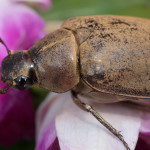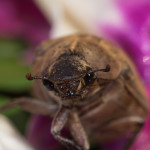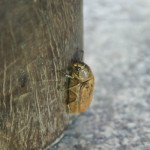Sugarcane Longhorn Stemborer (Dorysthenes buqueti)
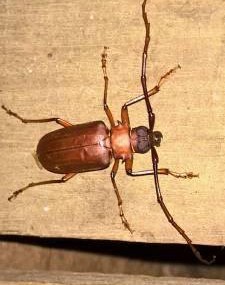
Image Copyright Nina Baum
Observed: February 2016
Observed By: Nina Baum
This species of longhorn beetle is considered to be a pest since its larvae dig into both sugarcane and bamboo leading to the death of plant.
It is a native insect of Southeast Asia.
Sugarcane Longhorn Stemborer Wikipedia
Diving Beetle (Dytiscidae)
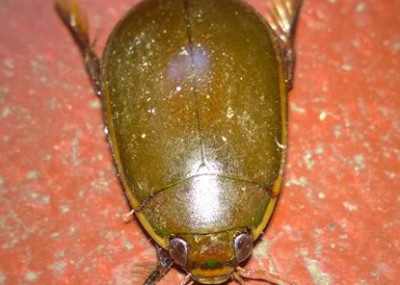
Image Copyright Napha Kotkangplu
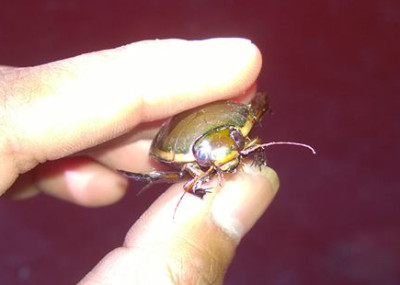
Image Copyright Napha Kotkangplu
Observed: February 2016
Observed By: Napha Kotkangplu
The diving beetles are a family of round-bodied beetles that grow to a maximum length of 4.5 centimetres.
There are loads of species of them and this… is one of them. If you’re a beetle expert feel free to let us know which one. The problem is that there are 4,000 species of diving beetle and they all seem to be small round and brown.
Life is short people so let’s just leave it at that for now shall we?
Diving Beetle Wikipedia
Common Earl
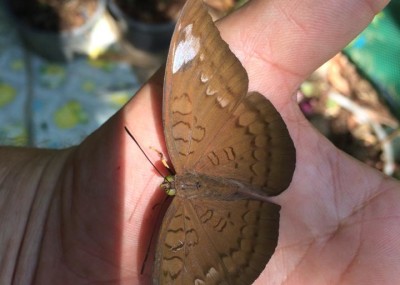
Image Copyright Hans Henrik Hansen
Last Observed: February 2016
Observed By: Hans Henrik Hansen
Butterflies get some strange names. Naming one the Common Earl suggests that there should be a rare earl or something out there that is altogether more exotic.
The Common Earl is a species of nymphalid butterfly native, even common, to South and Southeast Asia.
Common Earl Wikipedia
Clethyrogna Turbata
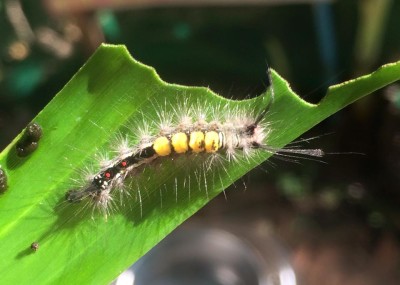
Image Copyright Hans Henrik Hansen
Observed: Koh Chang, December 2015
Observed By: สุธนัย ครุพานิช
The adult form of this moth species is a comparatively drab reddish brown colour but the caterpillar, as you can see, more than makes up for this by being a furry explosion of red, yellow and black.
Clethyrogna Turbata Project Noah
Colour Sergeant (Athyma nefte)
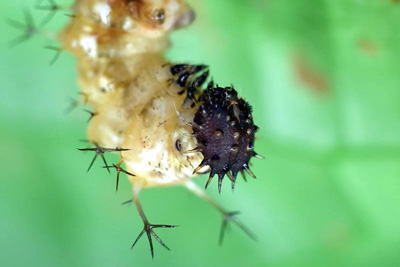
Image Copyright สุธนัย ครุพานิช
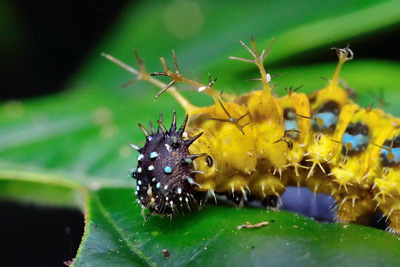
Image Copyright สุธนัย ครุพานิช
Observed: Koh Chang, December 2015
Observed By: สุธนัย ครุพานิช
The colour sergeant is a species of brush-footed butterfly with black wings that have a white and an orange stripe. You can’t see that here though since we only have observations of the weid and worderful juvenile caterpillar form.
As you can see this is a many-horned and spiky little creature that exudes all kinds of tendrils and feelers.
Colour Sergeant Wikipedia
King Crow (Euploea phaenareta)
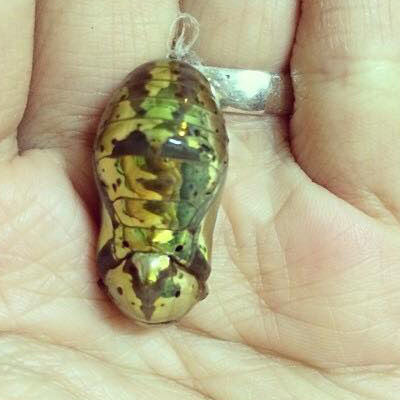
Image Copyright Loukpud Shinkhem
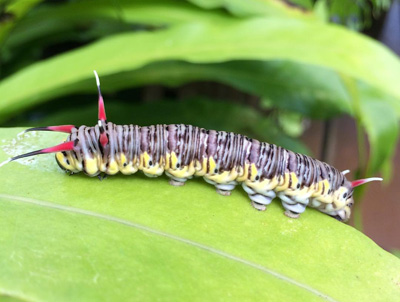
Image Copyright Loukpud Shinkhem
2015, Koh Chang
Observed By: Loukpud Shunkhem,
The King Crow is a butterfly with an amazing life cycle. It’s appearance changes constantly through its caterpillar stage culminating in the weird and striking final stage pictured.
Then the caterpillar turns into a pupa of a striking shiny gold colour.
And so when it emerges as a butterfly it is… brown-winged with white spots – a very respectable looking insect but not quite as bright as you would have expected.
There’s an excellent write up below.
King Crow Life History at Butterflycircle
A note on Instars
I keep reading about instars in relation to insect growth. Here’s what they are. Insects develop through a series of stages known as instars. Each instar usually culminates in the shedding of a layer of skin, and often, as in the case of the King Crow – by very dramatic changes in appearance.
Xenocatantops
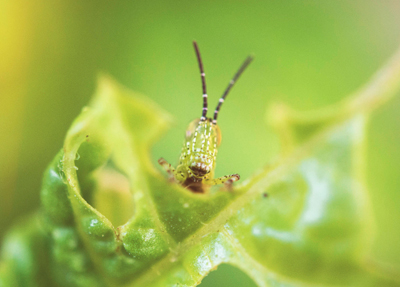
Image Copyright Jonathan Milnes
Observed: 2015, Koh Chang
Observed By: Jonathan Milnes
This grasshopper found on Koh Chang is amember of the Genus Xenocatantops, species of which are found throughout central Africa and Southern Asia.
Xenoctatntops at orthoptera.speciesfile.org
Sagra Femorata
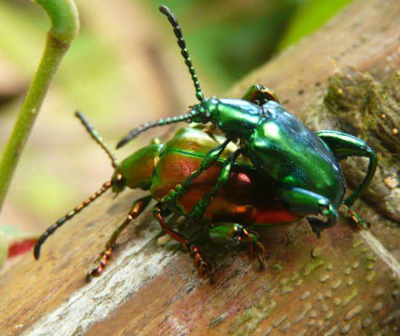
Observed: November 2015
Observed By: Coco Trilo
Sagrata felorata is a very beautiful small (20mm) beetle with a stunning iridescent blue-green colour. The species is widespread and is found across South and Southeast Asia.
The insects pictured are both males. The species exhibits a profound sexual dimorphism meaning that males and femals are very different in size and appearance – in this case the males are far larger and more brightly coloured.
Sagra Femorata Wikipedia
Lepidiota Stigma
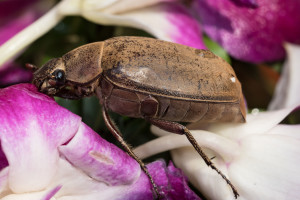
Image: David Vinot
Observed: February 2015
Observed By: David Vinot
Lepidiota stigma is a small beetle found in koh Chang.
It is noteworthy because it is capable of producing the purest natural form of white colouring – at least according to the link below.
Lepidiota stigma nhm.ac.uk
Eastern Tent Caterpillar (Malacasoma americanum)
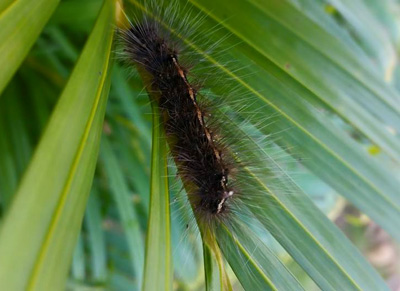
Image Copyright Rinske Hackman
Observed: November 2015
Observed By: Rinske Hackman
The Eastern tent caterpillar is the juvenile form of the the lappet moth. It is covered in immensely long hairs that serve as protection from predators.
Upon hatching thes ecaterpillars gather together under a tent that they weave out of silk until they have grown to a stage where they can progress alone.
The Wikipedia entry is particularly informative about pretty much everything you could ever think of to ask about this animal.
Eastern tent caterpillar Wikipedia













